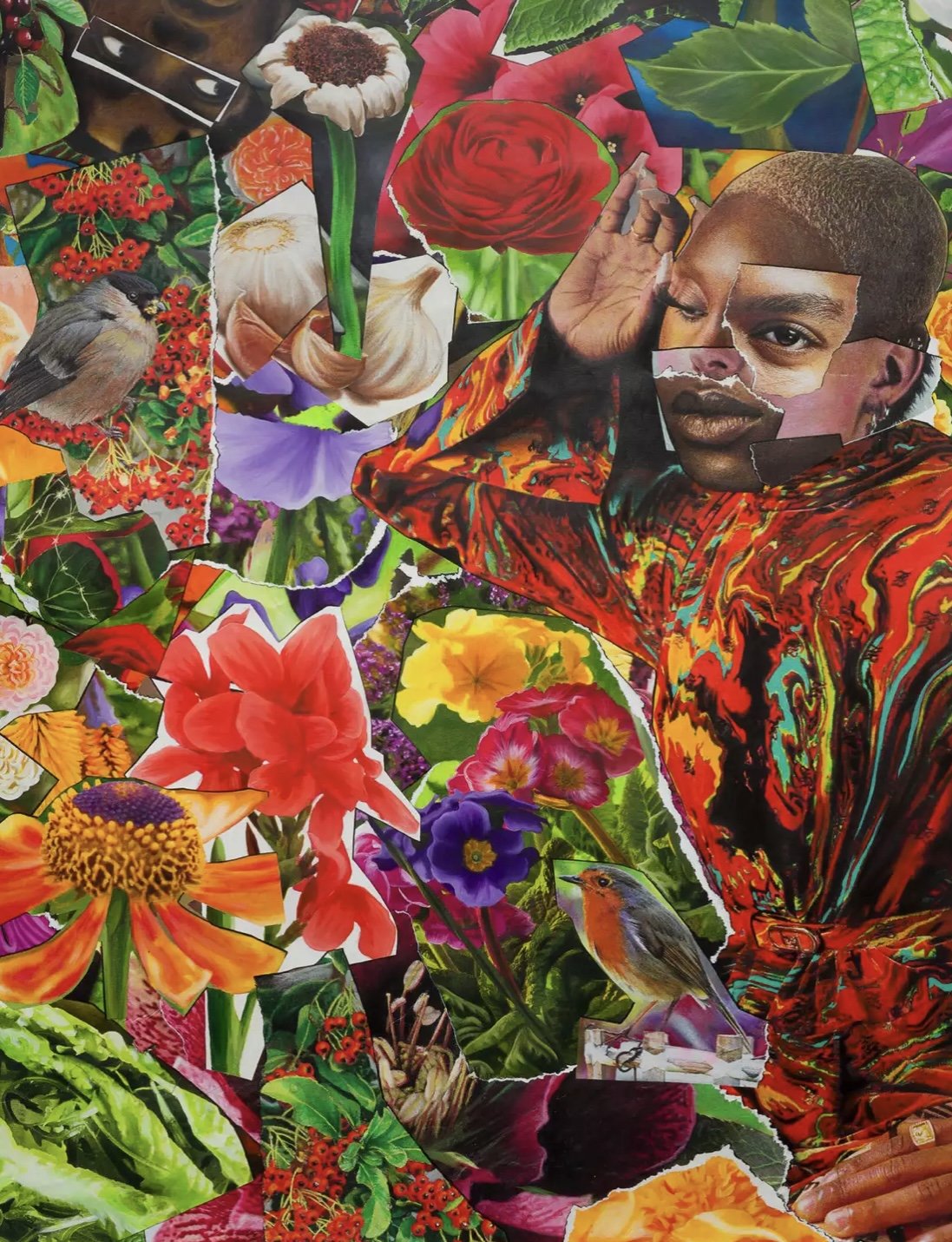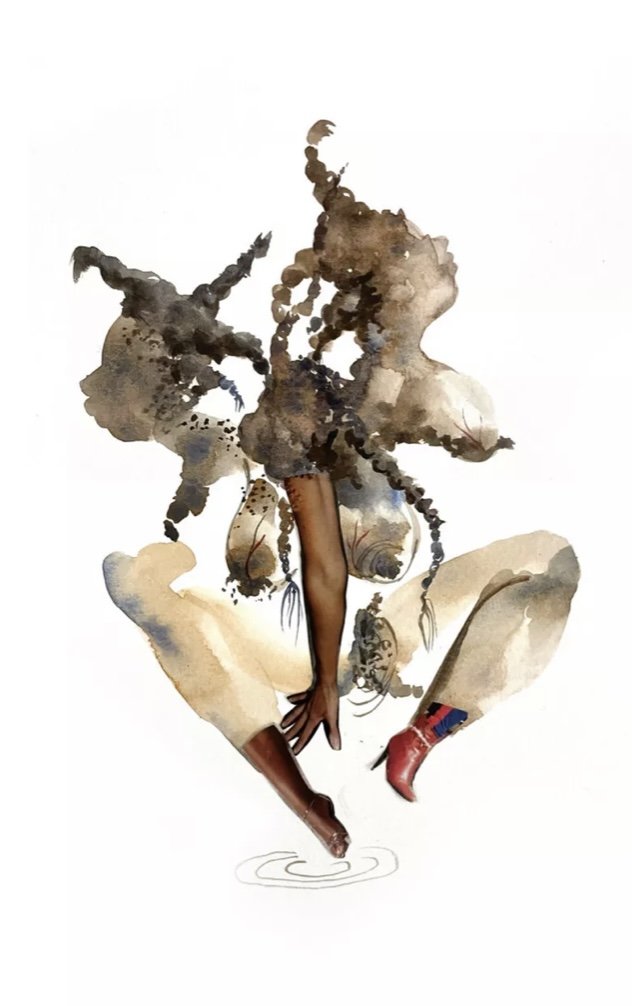It’s A Strange Time to Be Black In America: A Reality invented By The Art
By: Liza Montgomery
Speaking explicitly to visual arts, Black artists, critics, and historians have been contributing significant work and insight regardless of getting mainstream attention. However, it is only up until recently that their works have been considered worthy trending topics of discussion. I argue that there has never been a more crucial time to pay attention to the present day art scene. This resurgence of innovation, reclamation of history, and redirection of narratives is aiding in a revolutionary Black renaissance movement in the 21st century.
Since the beginning of time, American art history has been shaped by white narratives, leaving little room for questioning or the acknowledgement of other voices. Whereas Afro-Surrealism welcomes the absurd while reimagining and interpreting representation shown. It encourages artists to embrace the curiosity that comes from exploring new territory. In doing this it expands societal and historical understandings of Black people.
Artist and culture evolutionist, Larry Amponsah, creates multimedia art that investigates conventional practices of image-making while also incorporating unconventional methods of design. The Ghanaian artist uses techniques from painting on paper and tedious layering collages of imagery to creatively compose fluid and unique portraits, characters, environments, and scenes. Amponsah’s overlap, reconstruction, and embellishment of images, colors, and shapes produces an intriguing masterpiece that captivates viewers due to the immense detail and lively colors. His visual approach is neither shaped by reality or fiction, but is the space where the physical and imagination can coexist
Larry Amponsah - He Is No Alien To Me, 2022 (Collage, Print, Oil Pastel and Acrylic Paint on Canvas)
In the way that he cleverly positions intricate images from magazines, other media, containing images of fruits, vegetables, and animals, he brings together a detailed abstract collage. Amponsah’s background in painting and passion for multimedia comes together to create new ways for breaking boundaries in storytelling. With individual images, objects, and colors from different cultures he creates one rich, beautiful cultural mosaic. Today in America, visions of Blackness are often minimized and reflect a community of people that is not valued nor accepted by society. Despite this, Afro-Surrealism navigates a new world of liberation through transformed ideas, histories, and identities.
Amponsah’s art relies heavily on engaging his audience by attracting them through his strong visual and artistic abstract techniques, fully embracing surrealism. While Debra Cartwright, another surrealist artist, captivates her audiences in a more discrete manner. Looking at Cartwright’s work initially you are drawn in by the sophisticated and intellectual nature. Though her artwork is not as explicitly surreal as Amponsah, she practices surrealism by placing her audience in a more psychologically unfamiliar space that challenges their accustomed perceptions of Black womanhood and how Black women's bodies are viewed. Amponsah and Cartwright create Afro-Surrealism in different ways, but both their bodies of work explore a world of imagination through a Black lens.
Cartwright is another brilliant artist whose artwork studies the relationship in history between medical science and its impact on Black womanhood. Her oil paintings combine muted, earth-tone color palettes and conceptual depictions of different women's body parts. She does this to illustrate the dark history of Western gynecology with Black women. Cartwright’s painting practice exposes the horrific treatment of Black women by blurring the lines between past and present. This is evident in the blending and smudging techniques of the colors and the disembodiment of Black women's bodies. The layered and repeated hues of red, black, white, and brown with the combination of organs, arms, legs, a torso, breasts, and braids give an abstract recreation of these women’s experiences.
Pictured Left: Debra Cartwright, Free, You Thought, 2022 (Watercolor Collage on Paper)
Pictured Right: Debra Cartwright, One Desire to Dismember it, 2022 (Oil on Canvas)
Cartwright's dark and complex narrative was influenced by her childhood analyzing women’s autonomy in her mother’s gynecology practice. Nonetheless, her art pays necessary homage to the silenced voices and stories of Black women denied autonomy at the hands of American medicine’s internal and external violence inflicted on them. Acknowledging that the past affects the present allows awareness and revolution. Through Afro-Surrealism, artists and audiences are able to explore the infinite possibilities of alternative realities for Black people. This redefines a future for the Black community free from the limitations of oppression and systemic racism.
Amponsah and Cartwright are visionaries during our time that defy traditional expressions of Black identity and classification. They turn to a more freeing and boundless artistic movement that supports imagination, absurdity, and creativity to speculate on the possibilities in the future. Afro-Surrealism and Afro-Futurism, oftentimes are synonymously used because of their common goal of reimagining art history to reinvent Black existence. The two methodologies are alike because they stem from the same root, but they each still have their distinctive differences. Afro-Futurism focuses on the future and Afro-Surrealism intends to study the present’s relationship to the past in order to anticipate a reconceptualized future. For the most part, both movements inadvertently go together and ultimately support the repossession and rewriting of Black narratives.
Afro-Surrealism is the past and the prelude to a more empowering future for African Americans. So, if the abstract leads to this reimagination of Black identity, experience, history, and forces a new way of communicating, I pose a question to Black people and non-Black people alike: How long will it take to fundamentally realize Black people are here, we exist, and our experiences are legitimate.
Sources:
contemporaryand.com/magazines/black-mirrors-and-afro-surrealism/.
https://doi.org/10.2979/blackcamera.5.1.95.
https://www.lawrieshabibi.com/artists/186-larry-amponsah/
https://www.artsy.net/article/artsy-editorial-debra-cartwrights-abstract-paintings-examine-history-medical-science-black-womanhood
https://contemporaryand.com/exhibition/debra-cartwright-phantasmatic-figures/
https://www.thenationalnews.com/arts-culture/art-design/2023/01/29/ghanaian-artist-larry-amponsah-reflects-on-black-identity-in-first-uae-show/
https://nmaahc.si.edu/explore/exhibitions/afrofuturism
https://vistprojects.com/en/afro-surrealism/#:~:text=If%20Afrofuturism%2C%20Miller%20says%2C%20is,violence%20in%20the%20United%20States.
https://i-d.vice.com/en/article/dy8v5w/an-ode-to-afrosurrealism-photography-exhibition-by-adama-jalloh-and-hamed-maiye




